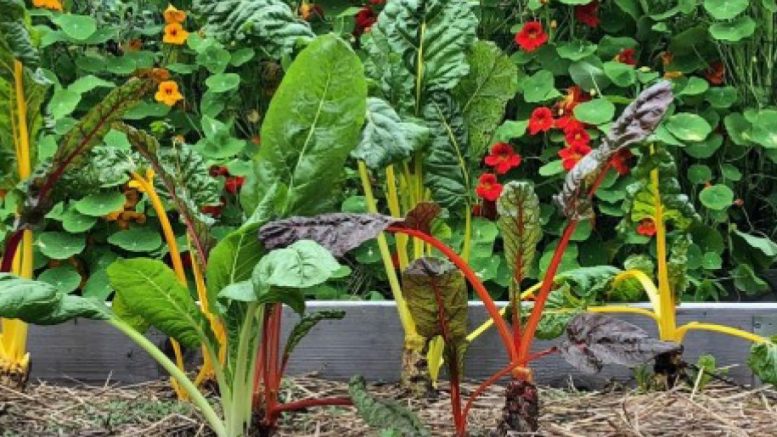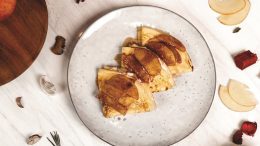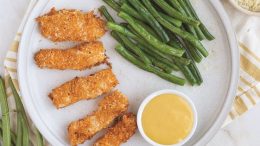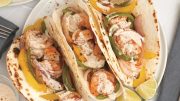Gardens can be beautiful and provide beneficial edibles in the same space. Learn the philosophy behind edible landscaping and specific suggestions of how to incorporate ornamental and edible plants.
In 1982, Rosalind Creasypublished her landmark book Edible Landscaping (2 edition was published in 2010). This book influenced how I created the gardens of my life. Not only does my garden need to be beautiful and kind to the environment, it also must help feed me and my family. A garden can invoke all of your senses—sight, sound, smell, touch, and taste.
Edible landscaping is the process and practice of including, in your garden, plants whose fruits, foliage, flowers, roots, and other parts (sap!) can be eaten. The rewards of incorporating edibles include saving money and helping the planet. It is a relief to know the source of your food and what chemicals are not used in their production. Personal satisfaction can be achieved through not only eating what you have grown, but also learning about the process of growing, harvesting, preparing, and preserving your own home-grown food. Edible landscaping can connect the children in your life with their food. You can take control of some of your food supply. Growing edibles provides you with the most nutritious foods. Because all foods begin to decline in nutritional value as soon as they are harvested, the most nutritious food is what you have just picked outside your door.
An edible landscape does not have to be ugly. Good design goals need not be sacrificed. Whether your garden is formal or casual, you can still satisfy basic design principles, such as balance, scale, line, repetition, and unity, by swapping an edible for an ornamental. Edibles exist with a myriad of forms, textures, colors, and sizes. You can choose from a wide selection of trees, shrubs, vines, perennials, and annuals.
If you have space and time, you can of course create a vegetable garden. You can start small with a container of lettuce or a patio tomato. You can build raised beds that provide an area for cool season and warm season crops using intensive gardening methods such as square foot gardening. Given space, you can even create a large fenced area to grow enough to live from the land. There is so much to learn about vegetable gardening. Most vegetables are annuals that you will start from seed. The seed packet provides valuable information on timing and depth of planting, growing conditions, and days to harvest.
But you can also incorporate the beauty of vegetables into your perennial beds and mixed borders. Kale has intriguing foliage. Lacinato, or dinosaur kale, has wonderful blue-green deeply textured leaves. Swiss chard has textured green leaves but stem colors of red, orange, pink, or white. Eggplant requires some space, but the plant is graceful. It has purple flowers followed by beautiful glossy fruit. If you want something spiky to enhance an area, members of the onion family may suit the bill. Leeks, garlic, and onions are annuals and can be tucked into many different sunny garden spaces, as each plant requires limited space to grow.
Along with vegetables, herbs are an obvious choice to add to your landscape. They enliven the output in your kitchen. Many are friendly to pollinators either as sources of food for larvae or, if you allow them to flower, as nectar plants. Perennial chives can add interest to the front of the border with their spiky foliage and pinkish-purple round blooms. A bonus is that most herbs are not palatable to deer.
Creative possibilities are limitless. If you need a large shade tree, choose a magnificent sugar maple (Acer saccharum) or a nut tree such as hickory, pecan, almond, Chinese chestnut, or walnut. Mid-size trees include fruit such as pear, peach, apple, plum, cherry, and apricot. Fruit trees come in sizes from standard (20by 20 feet or larger), semi-dwarf (15 by 15 feet), to dwarf (10 by 10 feet). They can also be pruned into unique (yet still productive!) espaliered forms. Pruned to fit into a vertical plane, you can create a barrier/fence or grow the tree against a south- or west-facing wall where its structure will provide stark beauty all year long. The native serviceberry or Juneberry tree (Amelanchier canadensis) yields flavorful and healthy berries, has stunning fall foliage, and can be grown as a multi-trunked specimen. Another native, pawpaw (Asimina triloba), has delicious fruit and is also a specialist host plant for the zebra swallowtail butterfly. Fruit trees may offer four seasons of interest: spring flowers, summer fruit, fall color, and the beautiful bark and naked structural form in winter. If you choose to grow fruit trees, you will need to learn about their horticultural requirements. Fruit trees require specific pruning during their first few years to define their permanent structure and additional pruning once or twice yearly thereafter. Many fruit trees need a different variety planted nearby to ensure fruit production. Native redbud trees (Cercis canadensis) do not have edible fruit, but they do provide edible purple flowers that grow against the bark of the tree limbs, beautifully outlining the tree’s structure in early spring.
Fruit shrubs, such as blueberry, gooseberry, currents, and elderberry, can be tucked into an ornamental border or grown as specimen plants. You can even train a gooseberry or current into a standard form, an elegant formal shape usually found in garden centers only in expensive rose or conifer choices.
Growing vertically, vines can be stunning on a fence, house, or outbuilding wall, pergola or trellis whether you chose edibles such as hardy kiwi, grapes, cucumbers or beans. Even roses are edible. Untreated petals make a delicious jelly. Edible hips are not only beautiful during the winter, but also provide nutrition for humans and wildlife.
Some edible perennials can be tucked into your mixed borders. Rhubarb (Rheumrhabarbarum) is a long-lived perennial that likes full sun and rich soil. Its stalks are the edible portion and are treated as a fruit in the kitchen. Rhubarb makes delicious jams, sauces, and pies. The large leaves can be very ornamental but contain oxalic acid and are poisonous to humans. It is an edible plant that the deer do not like. Most edible plants are favored by deer and other wildlife. You can choose to share some of your crop with them or create barriers to keep them away. Asparagus (Asparagus officinalis) is another perennial crop to grow. After harvesting the delicious spears in the spring, its fernlike foliage will continue to add a layer of interest to the garden. Both rhubarb and asparagus require patience as it will take a few years to get a significant crop.
Many flowers are edible. Nasturtium flowers are peppery. Borage tastes like cucumber. Eat anise hyssop if you like licorice. Bee balm is spicy and minty. Chive flowers are onion-flavored. These flowers add beauty and flavor to a salad or sandwich. And it is a joy to sample their flavors as you stroll through your garden. There are a few guidelines to follow to safely consume edible flowers.
My advice is to start small, be successful, and let that success breed further motivation. Your garden is a process, not a product. Edible plants require time to learn about, time to plant, time to maintain, and time to harvest, prepare, and preserve.
Whether you categorize your garden as postage stamp, native, sustainable, pollinator-friendly, heirloom, organic, low-maintenance, cottage, or formal, you can continue to learn about and to integrate edible plants into your landscape. Grow what you love to eat and soon you may be eating what you love to grow.
This educational blog is a series of informative articles from the Penn State Master Gardeners volunteers plus news concerning the group and their activities. For more information, click here.









































